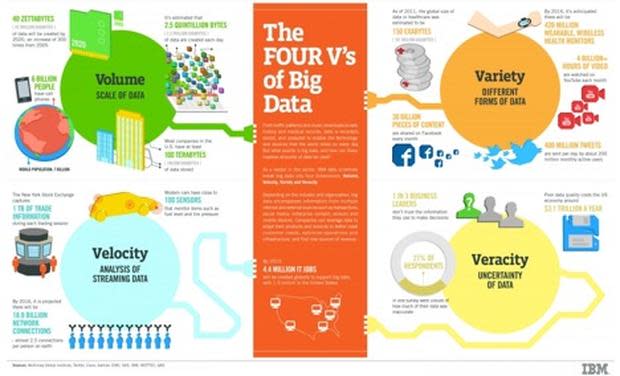Pundits' predictions about data centers for 2015

Image: IBM
It's that time of year when pundits are prognosticating what 2015 has in store for data-center operators. So, without further ado, these are the 2015 predictions for data-center technology (the most popular trends are listed first).
Pundits' predictions
Everything will be virtualized in data centers. This prediction is past conjecture. In 2014, I penned article after article describing how every facet of data-center infrastructure is or will soon be virtualized or software-defined. (Note: It seems those making predictions grouped virtualization and software-defined together under virtualization.)
If one were to prioritize the "things" in "everything," virtualizing networking infrastructure would top the list.

This prediction is another gift to the pundits. Research firms Gartner and Forrester have made, almost obscene, predictions about the growth of IoT devices. The fallout being a dramatic increase in information data centers will have to process and store.
There is one area of debate. Some feel large, centrally-located data centers will handle the influx. Others disagree saying smaller, closer to the "edge," and geographically-distributed data centers are required. Timeliness and network latency requirements will decide who is correct.
Data centers will both shrink and expand. This prediction, confusing as it is, simply means businesses with internal data centers are looking -- weighing the potential "issues" of transferring services off site against the benefits of less burden, less technology, and less staff -- to move existing services and or deploy new applications to the cloud. Colocation data-centers operators, who make up the cloud, are more than willing to absorb the services.
The bottom line: Services will shift from in-house data centers (shrinking) to commercial data centers (expanding).
Automating the data center. Automation is high on the wish list of data-center operators. The big three -- Apple, Google, and Facebook -- because of their in-house capabilities, have custom-built Data Center Infrastructure Management (DCIM) systems in place. However, commercial operators, not having that luxury will make due with off-the-shelf DCIM systems.
Data centers must handle the four Vs of Big Data. The four Vs -- Volume, Variety, Velocity, and Veracity -- will impinge on commercial data-center operators in a big way.
Companies trying to address the four Vs are finding they have neither the space nor the money to build out internally and are looking to outsource. "The data center of the future will approach data as information services and view it through dashboards that enable efficient use of high-level, business-driven metrics," states this Hitachi Data Center report. "With the data center engine in place, organizations can better capitalize on increasingly expansive and complex data for faster and more advanced insight and innovation."
Modular data center design. Designers and architects who specialize in data centers are rethinking their construction methodology. Previously, data centers were designed with a 20-year life cycle in mind. Today, it is hard to fathom a data center remaining competitive that long without major rework every few years. That's why builders will increasingly think modular: from prefabricated components (power centers, cooling towers, backup generators, etc.) to entire data centers being "turnkey" modules.
Besides longevity, modular offers the following advantages:
Quick project turnaround, and a simple way to scale.
More efficient and standardized data centers: a significant benefit for commissioning and training employees.
● Turnkey data-center modules allow companies to react to market trends.
Two unique predictions
Giles Proctor, VP of Data Center Services, Pacnet, offered an interesting prediction in this paper. "As the network starts to become a software function and as applications evolve that assume a ubiquitous, programmable network, this orthodoxy (i.e. resilient data centers) will be challenged," writes Proctor. "Building data centers to comply with the Uptime Institute Tier IV standard, for example, will become unnecessary, as applications will be able to take the failure of a single facility in their stride."
According to Mark Thiele, Executive VP of Data Center Technology at Switch, his prediction, offered in this blog, is a sure thing. "I'm willing to bet that by the end of 2015 no new data centers will be built with raised floor," says Thiele. "The design has been old for seven years. Raised floor costs too much, needs more maintenance, struggles under heavyweight load (heavier racks of gear) and limits your ability to use air cooling for higher density environments."
Any takers?
There is a common thread
The above predictions and ranking were the results of my unscientific poll. However unscientific, a common thread emerged -- the need for agility. Data centers will need to be nimble and flexible. Clients want the ability to make game-changing decisions rapidly and with less risk.

